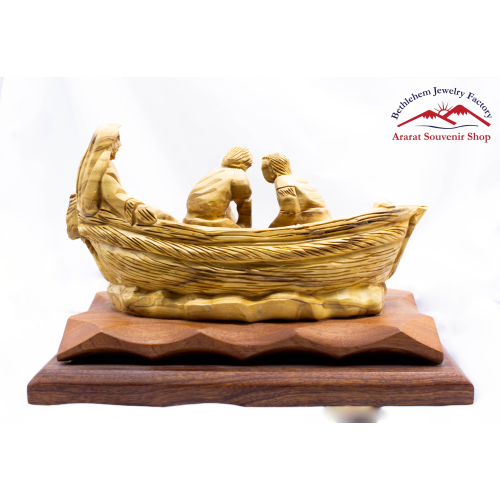Virgin Mary Icon
The Virgin Mary holds a special place in Christianity, especially within the Catholic and Orthodox traditions, symbolizing motherhood, purity, and divine grace. Icons of the Virgin Mary, often referred to as the Theotokos (Greek for “God-bearer”), encapsulate these themes and serve as significant theological and artistic expressions of Christian devotion. Traditionally, Virgin Mary icons are not merely decorative art but serve as instruments for meditation, prayer, and a deepening of faith, inviting the viewer into a spiritual encounter.
The iconography of the Virgin Mary is vast and varied, reflecting her many titles and roles within the Christian tradition. She is often depicted with Christ, highlighting her maternal relationship and the centrality of Jesus in Christian theology. Iconographic styles can differ, but certain elements remain consistent. Mary is frequently portrayed with a serene expression, symbolizing her humble acceptance of God’s will, as seen in her response to the Angel Gabriel during the Annunciation. This moment is pivotal as it underscores her consent to bear the Son of God, encapsulating the essence of faith and obedience.
One of the oldest and most significant icons is the “Hodegetria,” which depicts the Virgin Mary holding the Child Jesus on her left arm while gesturing towards him with her right hand, indicating that he is the way to salvation. This particular icon demonstrates her role as a guide for believers, directing attention away from herself and toward her son. The portrayal of Mary pointing to Jesus emphasizes her pivotal role in salvation history, as she leads the faithful to her child, who is both God and Savior.
Another popular icon is the “Eleusa” (Virgin of Tenderness), which focuses on the intimate bond between Mary and Jesus. In this representation, Mary cradles the infant Christ close to her face, echoing the tenderness of motherhood. This icon evokes deep emotional connections, capturing the warmth and love Mary has for her son. The Eleusa serves as a reminder of the human experience of motherhood and the divine interwoven with it, highlighting the importance of compassion and love in the Christian tradition.
The symbolism found in Virgin Mary icons is rich and multilayered. The colors used in these icons are not arbitrary; they carry specific meanings. For example, blue is often used to represent Mary’s purity and her role as the heavenly mother, while red symbolizes her humanity and sacrifice. The halo that surrounds her head signifies her holiness and significance within the life of the Church. Every element, from her clothing to her expression, is purposeful, embodying theological concepts that draw the viewer deeper into worship.
Icons of the Virgin Mary also serve a liturgical function. They are often displayed in churches and used during various religious ceremonies, invoking a sense of reverence and connection to the divine. The tradition of veneration of icons arises from the belief that they act as windows into heaven, allowing those who gaze upon them to encounter the divine presence. Such practices reinforce the notion that Mary is not merely a historical figure but a spiritual intercessor who appeals to God on behalf of believers, further enhancing her role in the life of the Church.
In addition to their theological significance, Virgin Mary icons are remarkable works of art, representing centuries of cultural and artistic traditions within Christianity. Each region has contributed to the development of Mary’s iconography, adapting styles to reflect local customs and artistic sensibilities. For instance, Byzantine icons emphasize the transcendence and majesty of Mary, while Renaissance depictions often focus on human emotion and realism, showcasing the evolution of artistic techniques and theological interpretations.
The veneration of Mary through icons also highlights the role of women in the church and society. As a figure of strength and virtue, Mary is often seen as a model for women, embodying qualities such as faith, obedience, and compassion. Through her portrayal in icons, she becomes an advocate for believers, encouraging them to embrace their spiritual journeys and commitments to service within their communities.
In contemporary society, the Virgin Mary remains a poignant figure of hope and intercession. Icons continue to inspire believers, offering a pathway to connect with the divine through the maternal love represented by Mary. In times of distress, devotion to the Virgin Mary often provides comfort and assurance, reminding individuals of God’s enduring presence in their lives.
In summary, icons of the Virgin Mary represent a rich tapestry of faith, art, and devotion that speaks to the heart of Christian spirituality. Through their intricate designs and profound symbolism, they invite believers into a deeper understanding of Mary’s role in the incarnation, her maternal relationship with Christ, and her continuing influence within Christianity. As a bridge between heaven and earth, the Virgin Mary encourages all who gaze upon her icon to embark on their spiritual journeys, fueled by the love and grace she so beautifully embodies.











Reviews
There are no reviews yet.